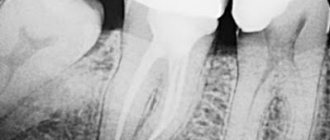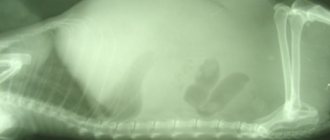Discharge from the anus indicates the presence of disturbances in the functioning of the rectum. What caused the discharge - infection, damage, neoplasm - will determine its nature. For example, purulent and mucous discharge is characteristic of inflammation. Bloody ones occur with polyps or hemorrhoids.
Mucus and pus discharged from the anus cannot be normal. Such discharge indicates the presence of infectious or inflammatory diseases in the intestines. The secretion from the anus can be of different colors, consistencies and be released in different volumes, depending on what disease caused it.
Mucus secretion
The following intestinal pathologies can lead to such discharge:
:
- haemorrhoids;
- Crohn's disease;
- irritable bowel syndrome;
- anal fissures;
- fistula;
- neoplasms;
- proctitis;
- intoxication (usually the discharge is watery);
- herpes in the intestines;
- dysbacteriosis;
- peptic ulcer;
- condylomas, etc.
More often, mucus is released along with feces during bowel movements. However, there are also cases of discharge between trips to the toilet. This may be due to inflammation or low sphincter tone. In a number of pathologies, the mucus may have a pinkish tint, which indicates the presence of bleeding.
How to determine intestinal disease by stool?
During an appointment with a gastroenterologist, when asked: “How long have you paid attention to the results of the gastrointestinal tract?”, many patients, blushing, look away. It's not shameful!
In our opinion, it is much sadder if you have never looked at your feces. Such observations are a very important method of self-diagnosis and diagnosis in general. The main thing is periodic observation, and not one single look at the stool in the morning before a visit to the doctor.
Changes in stool parameters are one of the main symptoms of most diseases of the intestines and gastrointestinal tract in general.
Indicators to pay attention to when self-diagnosis using stool:
- frequency per day and per week;
- consistency and volume;
- a change in the frequency and consistency of stool, compared to how it was before, when calm and peace reigned in the stomach;
- impurities in feces and its color;
- cases of ineffective or excessive urge to bowel movement;
- lack of urge to defecate or a feeling of incomplete bowel movement.
There is no need to look for a problem where there is none, and you certainly should not turn a blind eye to alarming symptoms. To determine what is normal, it is important to understand that each organism is individual!
Normal stool characteristics
- Frequency - usually 1-2 times per day, 3 to 7 times per week.
- The consistency of the stool, for quick orientation of the patient and the doctor, the Bristol scale, which was published back in 1997, is used. Let's get to know her better. Depending on the diet, the amount of fiber, and water, normal stools can vary from type 3 to type 5.
- Stability of stool, perhaps, has the most difficult explanation: there should be no sudden changes in consistency, frequency of stools during the week, +/- one type on the Bristol scale. The subjective sensation before, during and after the act of defecation is also important. This is a place for satisfaction and quiet joy, I’m quite serious!
- The color of the stool can vary, depending on the diet. Brown of different shades is considered optimal. We make adjustments for the color of food: a lot of dairy products in the diet - the stool will be lighter. Darker if you eat a dish with nori, a black burger. In addition, it is worth thinking about the drugs or dietary supplements that you can take - bismuth and iron preparations give darker, closer to green stools.
Warning symptoms that should not be ignored
- Reduced stools (frequency less than 1 time in 2 days or 3 times a week) or frequent stools (frequency more than 2, occasionally 3 times a day).
- Changes in shape and consistency. We will further get acquainted with the Bristol scale, it is not normal: fragmented, “sheepish” or dense, stool type 1-2 and, in contrast to it, mushy or watery stool, stool with separate flakes - type 6-7.
- Unstable stool - alternation of its consistency and frequency without any pattern, sometimes 1 time a day, sometimes 5, sometimes type 3 on the Bristol scale, sometimes 6. It is also important to notice what sensations accompanied the alternation of stool (good/bad).
- Color change. Pay attention to very light, closer to gray stool or very dark, black stool. Often yellow stools are also a sign of abnormality.
- The appearance of impurities in stool is perhaps the most formidable, but clear symptom:










